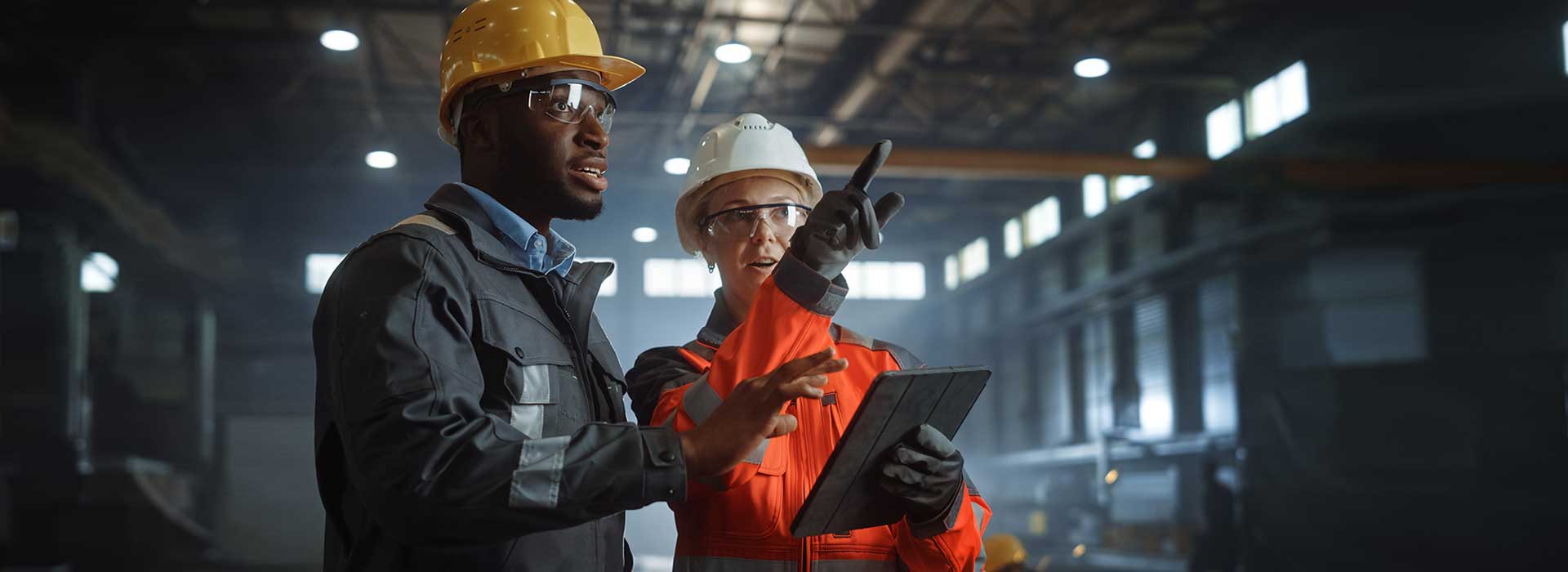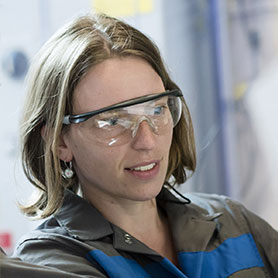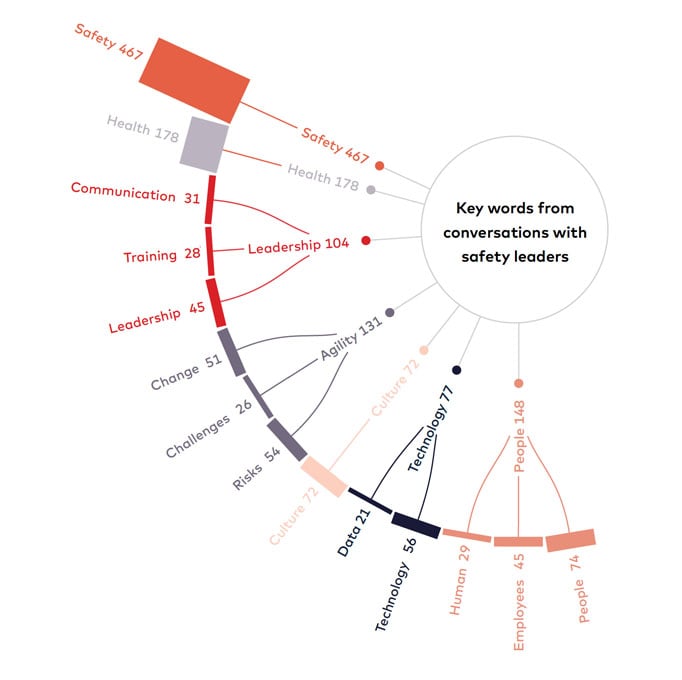Top 5 drivers to reach safety excellence
There is no magic formula to health and safety excellence. An effective health and safety programme requires inputs from a whole range of skillsets, from technical knowledge, analytical skills to listening, being flexible, and gathering people around the table to achieve the best safety solutions and outcomes. How these different skills combine to achieve health and safety excellence is a topic that dss+ is exploring as part of our “Safety. For Good” approach.


Tatiana Zamarova
Managing director for the CIS Region at dss+
It’s an approach that aims to gather opinions and thoughts from leaders across the health and safety ecosystem, which began with our recent safety report “Top 5 Actions to Implement in 2021,” addressing the latest challenges safety leaders face across Europe. This new report, “Top 5 Drivers to reach Safety Excellence” follows our initiative to celebrate International Women’s Day on March 8th. It puts the spotlight on women working in leadership roles in health, safety and sustainability as a source of thought-leadership, inspiration and encouragement for all those who share a passion for safety.
The report coincides with The World Day for Safety and Health at Work on April 28th and analyses the five key drivers that can help build resilience and sustainability in challenging times. Summarising the thoughts of our panellists, the report focuses on how leadership, agility, culture, technology and people are crucial to success. Based on inspirational stories of steps taken to add strength and depth to programmes and the key qualities that help all companies make health and safety programmes more resilient, the report mirrors the passion for health and safety that drives each one of our panellists forward. By giving a voice to a broad range of expertise in the sector, we can learn from each other, progress and, importantly, attract fresh and diverse talent.
While this particular report focuses on the opinions of professional females, from our Safety. For Good initiative, we have learned that safety has no gender. There is an incredible amount of knowledge, commitment, and passion present in the sector across different genders and competencies that combine to make safety an attractive and exciting career prospect. By highlighting women’s specific safety opinions and ideas, we help enrich a shared pool of thought on making the workplace a safer place. As Henry Ford once said, “Coming together is a beginning, staying together is progress, and working together is success.”
“By highlighting women’s specific safety opinions and ideas, we help enrich a shared pool of thoughts on making the workplace a safer place.”
– Tatiana Zamarova, Managing director for the CIS Region at dss+
Women in safety
In compiling this report, we conducted in-depth interviews between March and April 2021. We gained valuable insight and thoughts from our expert panellists, all working as professionals in health, safety and sustainability roles across a range of industries and regions. We have great pleasure in introducing each of them below.

Ana Ferreira
Portugal | Automotive

Aude Menseau
France | Food & Beverage

Barbara Trautmann
Germany | Manufacturing

Christine Becard
France | Manufacturing

Dina Maria Del Pino Mendoza
Spain | Renewable Energy

Eva Trulsson
Sweden | Chemicals

Evelyn Joos
Benelux | Chemicals

Janneco Pothuis
Netherlands | Manufacturing

Joana Godinho dos Santos
Germany | Renewable Energy

Laure Girodet
France | Utilities

Lotte Kaster
France | Manufacturing

Maria Pia De Caro
Benelux | Food & Beverages

Paula Monteiro
Portugal | Pulp & Paper

Peju Arenyeka
UK | Pulp & Paper

Regine Maegerlein
Germany | Manufacturing
Top 14 key words extracted from a +15,000 word document, gathering 600 minutes of discussions with 15 senior female leaders in EHS conducted from March to April 2021.

Top 5 drivers to reach safety excellence
Driver # 1. Leadership
Being fully aligned with safety principles and setting the right tone helps provide the required foundations for safety success. Become visibly involved and make good safety achievable. Make communication positive by focusing on good safety actions that inspire others to follow.
Driver # 2. Agility
Take forward-looking and proactive steps that put health and safety ahead of the curve. Develop the organisational flexibility to respond effectively and efficiently to emerging risks on the horizon. Involve others and seek expertise to inject agility into operations.
Driver # 3. Culture
A sustainable safety culture thrives in a positive environment. Adopt an inclusive approach to raising safety awareness and achieving buy-in. Recognise good safety behaviours and honour achievements that raise safety standards. Focus on long-term initiatives that strengthen the link between personal and workplace safety.
Driver # 4. Technology
Use smart tools to reduce the risks associated with human interventions and gather data to measure and monitor health and safety programmes. Revitalise training programmes through virtual workshops and gamification that help to visualise safety risks. Technology should empower employees to make better safety decisions.
Driver # 5. People
Broaden solutions and improve success with diverse talent. Highlighting career prospects will inject new skill sets and knowledge to enhance the sustainability of the health and safety sector. Seek out role models and appoint ambassadors to promote awareness.

Driver #1. Leadership
Walk the talk
The impact of leadership is considered a, if not the top, driver of safety excellence. Not only should leaders be fully aligned with health and safety principles, but support needs to be visible. Being visibly involved with health and safety and leading by example helps to achieve much-needed buy-in from employees. When leaders are fully aligned with the process, they help join up the dots between operational health and safety excellence and the mindset change required to bring all employees on board. By walking the talk, leaders become a credible and trustworthy part of the process.
Set the tone
It is essential that leaders set the tone by showing that safety is a core company value. If there is no backing from top management, then efforts to improve health and safety are marginalised. When leaders own their health and safety responsibilities and set examples that staff can follow, the importance of health and safety becomes tangible across the business and improvements become more visible. Leadership actions do not need to be complex; a desire to learn and contribute to the discussion is often all it takes. Setting the right tone is a driver of good safety, and good safety is good business.
By walking the talk, leaders become a credible and trustworthy part of the process.
Positive communication
Leadership has to translate health and safety aims and ambitions into words and actions that resonate. With distinct communication on safety messages and clear KPIs, leadership avoids a safety disconnect across different parts of the company ecosystem. Leaders must also demonstrate that good health and safety actions are easily achieved by having the right support structures and learning processes in place. Focusing on good safety actions that inspire others to follow helps to make communication positive.
Driver #2. Agility
Reactive to proactive
The pandemic offers a unique opportunity to learn and develop continuity plans in the event of subsequent business shocks and underlines the importance of the ability to manage risks dynamically. Being agile is about having the right mindset. Using new information to find ways to make things better, safer, more effective, and reliable is part of a progressive health and safety strategy. The crisis has highlighted the importance of using this information to look ahead of the curve to strengthen reactions to future threats. Agility in health and safety is underpinned by a forward-looking mindset that moves health and safety from reactive to proactive.
Emerging risks
As we saw with COVID-19, companies able to adapt health and safety protocols quickly had the structures and procedures in place to respond to the crisis more effectively and ensure business continuity was maintained when operations were able to resume. Business agility helps to identify and implement measures critical to safely ramping up operations, as in the case of the pandemic. Notably, an agile approach puts in place the groundwork to respond effectively and efficiently to emerging risks on the horizon.
Interdependence
An agile response to a business or health crisis relies on a ‘one team’ approach. Always involving leadership, it’s an approach that can be rapidly deployed and scaled up or down depending on the situation. It relies on learning from past events and using the right expertise to suit circumstances. Agile companies saw how connected, supportive, caring, and trusting people were during the crisis, which helped manage the crisis and demonstrated a vital pillar of developing an agile health and safety culture; that we are all interdependent.
Agility in health and safety is underpinned by a forward-looking mindset that moves health and safety from reactive to proactive.
Driver #3. Culture
Raise awareness
The ability to change behaviours is critical to establishing and embedding a good safety culture within any organisation. It requires an inclusive and active approach to changing how risk is perceived from the leadership to the shop floor. Besides leadership support, it is essential to repeat safety improvement messages constantly across a range of communication platforms to encourage a level of retention that can begin to impact behaviours. It’s about putting the focus on safe behaviours that others can easily replicate across the business ecosystem. As awareness grows, behaviours will improve, and the desired safety culture will begin to emerge and mature.
Give praise and recognition
A good health and safety culture relies on employees being engaged and inspired. Achieving this requires moving health and safety from a culture of blame to a more positive experience. Praising good behaviour can be a powerful enabler to changing health and safety culture. Honouring achievements made on improving health, safety and sustainability issues through recognition programmes and awards cement good practices and demonstrates that health, safety and sustainability are core company values.
As awareness grows, behaviours will improve, and the desired safety culture wiall begin to emerge and mature.
Look to the long-term
Changing the safety culture is not achieved overnight. It requires perseverance and a long-term approach that contributes to building trust and credibility. Focusing on a few achievable long-term health and safety targets can be more effective than introducing many short-term initiatives that overwhelm employees. Any long-term approach to establishing a good safety culture should also involve the community. Community engagement programmes help develop more positive connections between the company and community, reinforcing a more inclusive and caring health, safety and sustainability culture. Safety does not stop at the end of the working day.
Driver #4. Technology
Smarter safety
With new technology a growing part of working life, collaboration to create new safety solutions that embrace innovation is essential. By being smart with technology, we can reduce the risks associated with human intervention by using drones for routine inspections, facilitating realtime risk assessments, or using sensors to help avoid collisions. Technology also has a significant role to play in improving sustainability by monitoring and measuring the resource needs of plants and the workforce more effectively. By providing the tools to standardise health and safety programmes and benchmark key safety performance, technology gives muchneeded commonality to environmental management.
The use of technology should empower employees and help them make better safety decisions and choices.
Training engagement
Through virtual meetings and workshops, technology has enabled us all to stay connected during the crisis. At a deeper level, digital tools to perform remote Gemba walks are increasingly invaluable for health and safety training, and virtual reality is revolutionising how we experience risk. Gamification helps to upgrade training from a ‘must do’ to a ‘want to do’ exercise. By visualising health and safety more dynamically and interactively, technology is helping to improve training engagement.
Digitalise but keep it human
Technology offers the ability to analyse data more accurately and quickly to predict potential safety gaps across sites and avoid future accidents, providing much-needed agility to react to issues and implement solutions. Additionally, a well-developed health and safety management system can use technology to analyse data to address specific health and safety pain points requiring particular or more long term attention. Importantly, the use of technology should empower employees and help them make better safety decisions and choices. Technology should support good safety behaviour, not replace it.
Driver #5. People
Diversity
The need for diverse opinions and ideas is crucial in the complex world of health, safety and sustainability. Whether it’s women, men or different cultures, we are all wired differently and approach problem-solving in distinct ways. Deepening the talent pool has enormous benefits for health and safety, particularly as we embrace new technology. Equally, diversity of thought and approach is increasingly essential to reflect the safety challenges ahead. Not having a fair representation of diversity within health and safety can result in narrow solutions and poor outcomes.
Sustainability
Creating a safe work environment for future generations is integral to developing a sustainable health and safety strategy. To achieve this, encouraging broader skillsets that focus not only on operational and analytical expertise but also technology, environmental, communication, and people skills is vital. Having a diverse knowledge bank can help fulfil the complex requirements the role now demands to create a more vibrant and attractive career path. Companies should now look to improve the opportunities to attract and retain the talent needed to keep the sector revitalised and sustainable.
Diversity of thought and approach is increasingly essential to reflect the safety challenges ahead.
Seek ambassadors
Creating more robust networks and role models that support safety roles across the ecosystem can help foster and nurture talent. Networks are an excellent way to share best practice and develop knowledge. A mentor with broader skills and experiences is invaluable when you need advice or inspiration to guide and encourage team members. Health and safety role models also act as ambassadors that create awareness both within the company and externally. These ambassadors help to shine a spotlight on the vital contribution that health, safety and sustainability professionals make to keeping the global workforce safe.
What’s next for the HSE sector?
COVID-19 has firmly put the spotlight on the global reliance on the health and safety sector to keep the workforce safe and the wheels of business turning. Without a robust HSE sector, there is little doubt that essential services would have ground to a halt, compounding the already catastrophic impact of the crisis. From our conversations with HSE professionals, we are proud to have gained a unique insight into a compassionate and dynamic sector that has shown remarkable resilience in dealing with an unprecedented situation. So what’s next for the HSE sector?
Moving towards safety excellence
Despite the fact that the sector is still dealing with a global health crisis and normality has yet to return, safety leaders must take the opportunity to assess strategies in the light of their reactions to the pandemic and strengthen measures to meet emerging health and safety risks. While operational discipline provides the foundation for good safety hygiene, it’s increasingly clear that leadership and culture also play a role in improving health and safety behaviours and achieving employee buy-in. Embracing technological innovation and nurturing new and diverse talent also need to be added to the mix as health, safety and sustainability requirements grow in complexity. An approach that balances a broader range of factors to keep the HSE sector moving towards safety excellence is now vital.
An approach that balances a broader range of factors to keep the HSE sector moving towards safety excellence is now vital.
Cultivating resilience
We have been able to witness first-hand how resilience is a crucial characteristic of a company’s ability to deal with a crisis. However, true resilience is the ability to not only deal with immediate events but to manage future risks; it’s about acquiring the agility and foresight to respond to the demands of a constantly changing health and safety landscape. Alongside robust strategic frameworks, listening and encouraging opinions that focus on positive actions offer a more inclusive platform to strengthen health and safety programmes and cultivate the resilience required to respond to situations more effectively.
The progression and evolution of the HSE sector will, to some extent, depend on lessons learned during the crisis and how the balance between operational discipline, leadership and company culture is now managed. Certainly, we have seen a heightened level of collaboration between internal and external expertise that has helped the sector deal with the crisis head-on. With new technology a growing part of health, safety and sustainability roles, future collaborations and the development of new skills and expertise will be critical to the evolution of a vibrant and more resilient HSE sector.